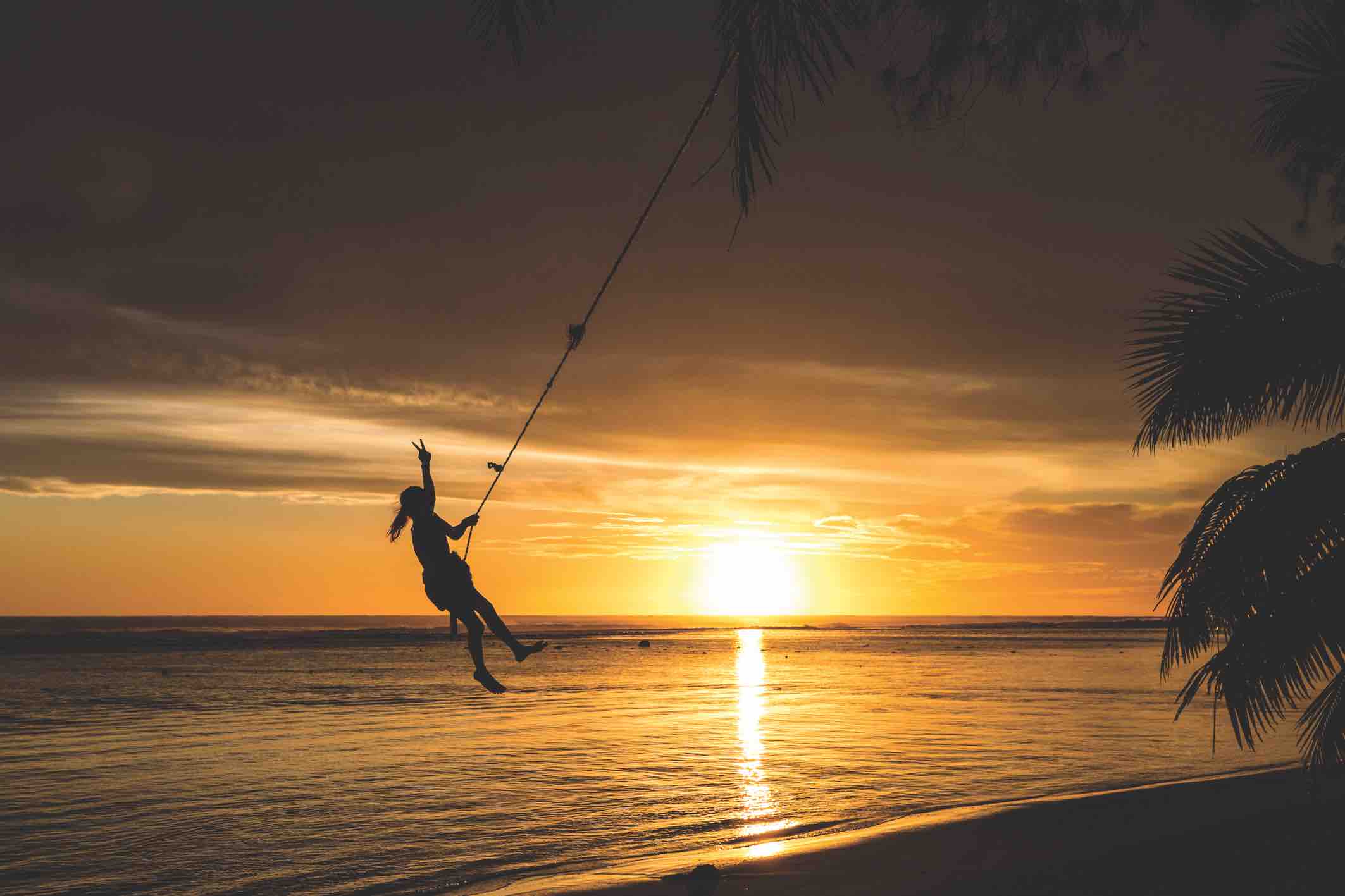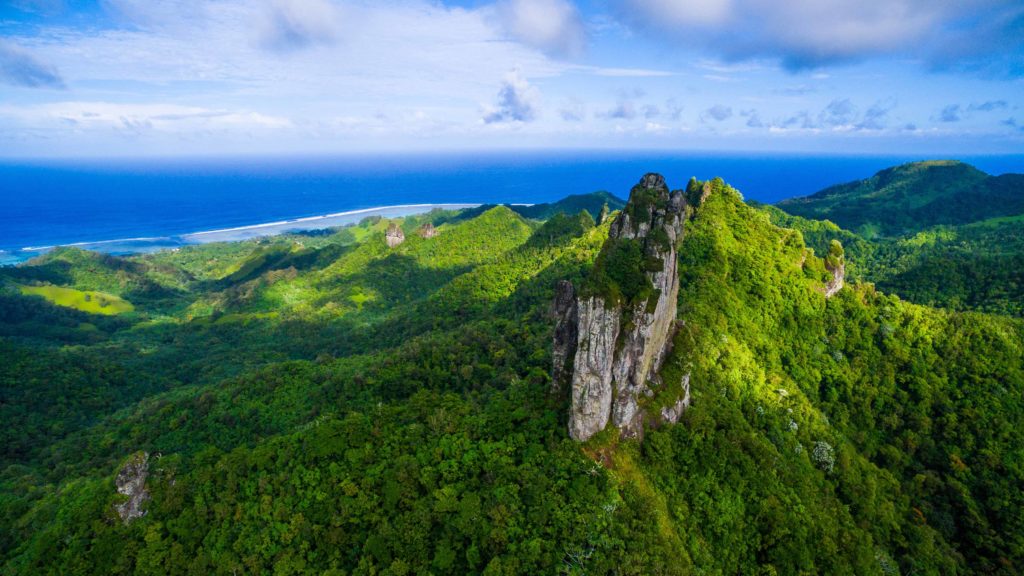Pacific Islands
Cook Islands guide to life
Craig Tansley reflects on a childhood spent in the Cook Islands, and says nothing much has changed in the time since.
November 26, 2019
Pacific Island Living
November 26, 2019I know I’m not the only adult who looked back on their childhood and wished life was still that simple. Everything seemed so safe when you were a kid. Though it was just the apathy of youth that saved us from reality. Terrible stuff was still happening; you just didn’t see it, or hear about it; you were probably pretending to be Batman. Unless … of course … like me, you were lucky enough to grow up in the Cook Islands.
Even today, nearly four decades on, I go back to the place where I did my growing up, and find it really hasn’t changed much. The only thing that’s changed for me in Rarotonga is the size of the airport, it seems to shrink each time I arrive. I remember it as the biggest airport in the universe, when really it’s not much more than a big shed
People walk across the tarmac to get to, and the same old bloke (Jake Numanga) plays a ukele to welcome you all in. And when I ride a scooter around Rarotonga now, breathing in those same smells I remember as a child, I can’t believe it only takes 40 minutes to make my way around the island – was my world really that small?

It might be tiny, but I can still get lost – it’s easy when you take to the back road, the Pacific’s oldest road, Ara Metua. Up there it’s another world entirely from where all the tourists congregate by the coast road, even though it’s only a couple of hundred metres inland. But up there locals live off the arrowroot, pawpaw and taro plantations they tend beside the roadway. Their pigs and goats were the only things I ever saw on the road, and that’s still the same today. Big mountains rise up behind their plantations … thick forest blocks anyone getting to them, though you can access them on the cross-island trek, the views from up there are worth the toil, and there’s a small waterfall to swim under, at the end of it.
The Cook Islands have been spared the development of many other parts of the Pacific. Sure, things have changed, but even here on Rarotonga – the most ‘developed’ of the 15 islands that make up the Cooks – not much has changed since I started barefoot at Avatea Primary School in 1979. There’s a level of sophistication here, many of the resorts are five-star, but there are still no high rises (or chain hotels) – the constitution says no building can be higher than a coconut tree. There’re still more animals on the roads than cars, and Cook Islanders can still manage to squeeze their entire families onto a scooter.

The speed limit’s 50kmh – but few ever do it – and while tourists these days have to wear helmets on their scooters, locals (over 25) don’t because it ruins hair styles when the island drives to church every Sunday morning. At Muri Beach, one of Rarotonga’s best swimming spots, locals still ride horses bareback on the beach and local families race their tiny sailing boats between the coral heads here on weekends, just like my family did all those years ago.
The Cook Islands are one of the world’s last great secrets, I think. There are parts of the 15 islands that make up the group, spread across two million square kilometres of ocean, that have never been seen by tourists. Only 15,000 people live here, 10,000 of whom live on Rarotonga. There are islands only 45 minutes’ flying time from Rarotonga – like Mangaia and Mitairo – which receive fewer than 100 tourists in a year. Lonely Planet calls these islands: ‘a castaway’s dream come true’.
Cook Islanders used to share child-raising duties when I was young – I never could quite work out who belonged to whom. It’s still the same today – some families give up their babies to siblings who can’t have children. That epitomises the Cooks for me; no-one does more for their families than Cook Islanders. They’ll love your family too – especially if you have kids, don’t worry about baby sitters, here you have an entire island group of them. It’s the locals I remember most of all from my childhood; they giggle like school girls, especially the biggest men. They live for conversation … and food. Outrigger canoe racing might be the national sport of the Cooks, but I’d counter that eating’s every bit as important a pursuit. Dining out is a national pastime; though best of all were the island feasts we’d go to in friends’ backyards; called umukais. Locals dig an underground oven (umu) and bury pork, chicken and fish, and kumera and breadfruit and arrowroot on smoking ashes, then cover it all with banana leaves, and drizzle everything in coconut cream. These days, I recreate my childhood days by booking a progressive dinner, where you can visit three families on Rarotonga for three courses; the main course cooked in an umu is always my favourite.

I left Rarotonga for Byron Bay when I was still a child; these days it’s one of the trendiest coastal towns on Earth, but I don’t find it nearly as utopian. There’s traffic there, and insane holiday crowds and even crazier prices for accommodation, while the Cook Islands is still affordable, and provided you avoid the times when school holidays in New Zealand and Australia cross over, it’s never very crowded. In a world gone slightly mad, I find myself clinging tighter to the possibility that some things might never change.
More: www.cookislands.travel
© 2024 Pacific Island Living Magazine all Rights Reserved
Website by Power Marketing